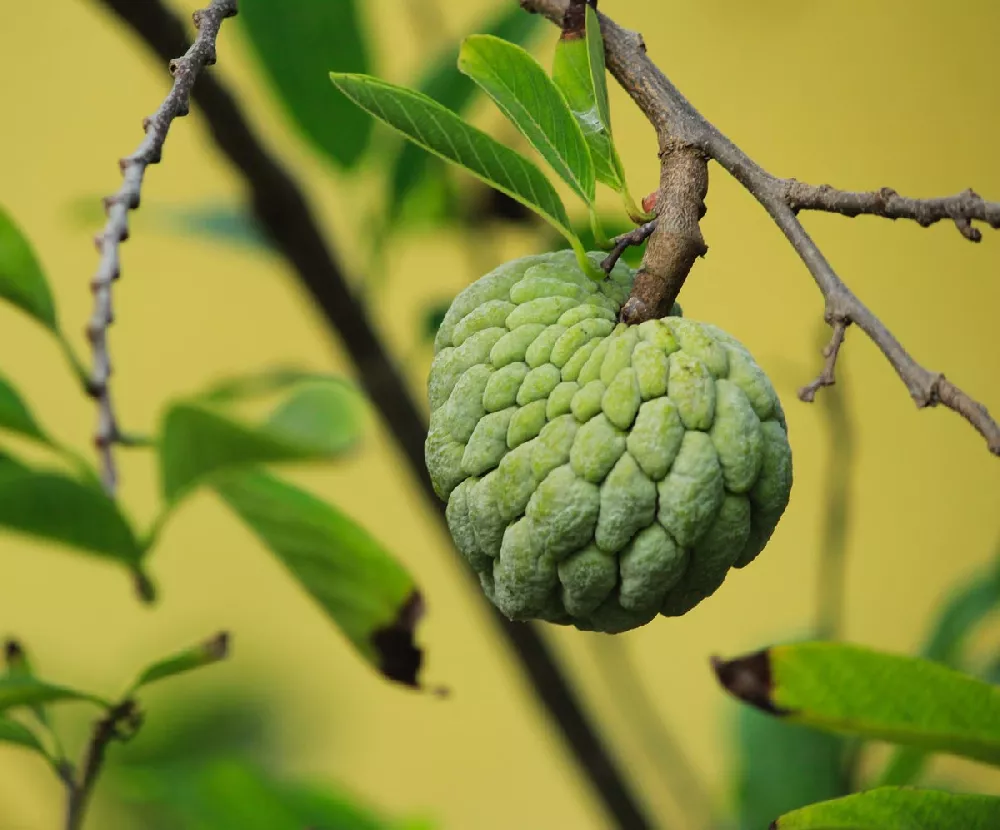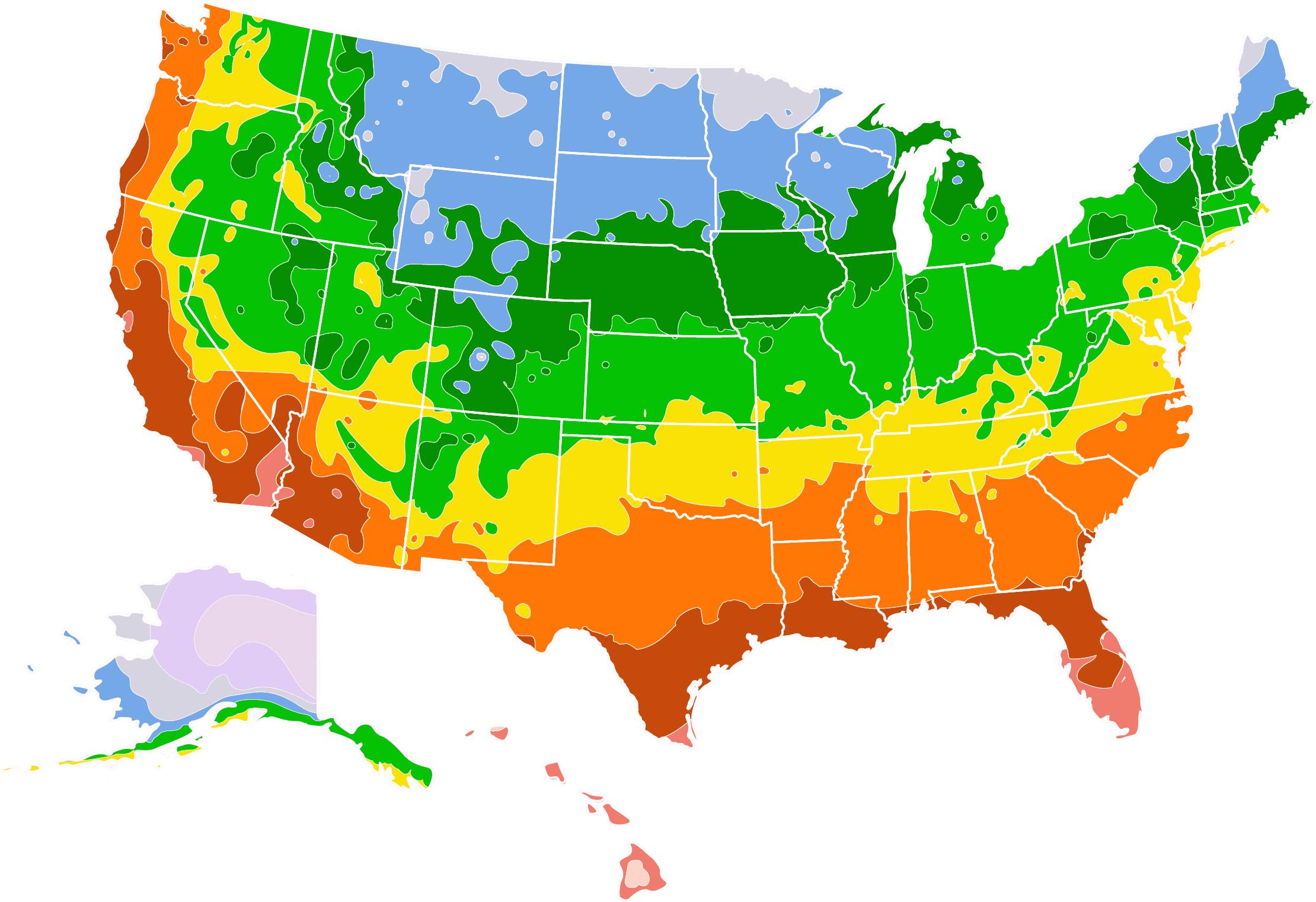- Home >
- Edible Plants >
- Sugar Apple Tree
Sugar Apple Tree for Sale - Buying & Growing Guide
- Ships in 1-2 days
- 1-Year Warranty Eligible
- Pots or accessories are not included unless specified in the product options.
Shipping Details:
Once your order is shipped, you’ll receive an email with a tracking number and estimated delivery date. Most orders ship immediately, but some items are seasonal and may only ship in spring or fall. These products are noted on the website.
If you live in the southern U.S. or in a tropical climate, you are probably familiar with the sugar apple tree, also known as custard apple, sweetsop, or, to give it its proper name, Annona squamosa 'NaDai'. This warm-weather tree produces fruit that may look on the outside like it belongs to the Incredible Hulk, but the sweet, custard-like treat inside that rough green skin is irresistible. In addition to gifting you with its fruit, the tree provides an attractive focal point in the garden or landscape. Here are a few other reasons to grow a sugar apple tree:
- For those in northern climates, it can be easily grown in a container and brought inside in winter.
- Trees grow to a maximum of 20 feet, making harvest easy.
- Fruit can be eaten fresh, juiced, or used in desserts and ice creams.
Plant Care
Sunlight

Sugar apple trees grow best when they have full direct sun for much of the day — at least eight hours daily.
Watering
Once established, water these small trees about once a week unless you receive rain.
Fertilizing

Fertilize young trees every six to eight weeks during the growing season; taper back feedings when mature.
Planting and Care
Planting instructions
Select a spot for your sugar apple tree that gets good, consistent sunlight throughout the day, with soil that drains well. The trees aren’t picky about soil type, but they don’t like standing water. Dig a hole for your sapling that’s twice as wide as the root ball and just as deep. Unpot the tree and tease out any encircling roots, which can eventually girdle the tree and kill it. Place it in the hole so that the top of the root ball is at ground level, and fill in around it with soil, tamping as you go to eliminate air pockets. When finished, water thoroughly and apply an organic mulch, such as bark chips, around the tree’s root zone, being careful to keep it from touching the trunk.
Watering and nutrients
Water your young tree consistently about once a week, giving it roughly an inch of water at a time, unless you get the same amount from rain. Once the tree is established and growing well, it will need less supplemental watering. To know when to water, dig a hole down 2 inches near the root zone, and, if the soil seems dry, give it a watering. Fertilize young trees frequently — every six weeks is good — with a balanced, slow-release fertilizer designed for trees and shrubs.
Pollination
Sugar apple trees are self-fertile, although you will get a larger harvest if you have more than one tree. They flower in mid to late spring. Flowers are small and feature three elongated green petals with tiny sepals and multiple pistils on each flower. Pollen is transferred most frequently by a variety of beetle called nitidulid beetles, or sap beetles. Flower pollination happens more readily during times of high humidity.
Pruning
Avoid pruning your tree during its first year, unless it’s to remove broken or diseased branches. The following year, prune back main limbs to encourage side branches to form and to help shape the tree. A light annual pruning each year should be done in early spring to remove about a third of the previous year’s growth. You can also prune the top selectively to keep the tree shorter and more manageable.
Pests and diseases
Insect pests that may be attracted to your sugar apple tree include the annona seed borer, which is common in Florida. Look for small black holes on the surface of fruit, as well as decayed fruit. Fixing paper bags over individual fruit will prevent infestations. Other insects include several types of scale insect, mealy bugs, and ambrosia beetles. The sugar apple tree is fairly disease-resistant, although it may infrequently suffer from dry fruit rot, which is a fungal disease. Consult an arborist if you have any significant problems.
Harvesting
Sugar apples won’t keep ripening after they’ve been picked, so hold off on harvesting until the fruit color changes from green to a more yellow-tinted green. Other signs of ripening include a white or blue bloom covering the fruit, and the spaces between the fruit’s bumpy surface turning yellow. Ripe fruit should be kept at room temperature and should be used quickly — they only last for a few days off the tree.
Achieving maximum results
Sugar apple trees are not high-maintenance — and because of that, they adapt readily to container growing. If you live north of Florida and would like to grow sugar apple trees, select a container that is about twice the size of the sapling’s root ball, and fill it with a fertile soil that’s been amended with some well-rotted compost or manure. Plant your tree as per the directions above, and set it outside if the weather is warm. Bring your tree inside whenever the weather is predicted to go below 30 degrees Fahrenheit. During the winter, place it in a sunny window and cut back on fertilizing. Wipe down the leaves regularly to remove dust and mist the leaves with water once a month or so.
FAQs
How long before my sugar apple tree will bear fruit?
A sugar apple tree should have a light harvest after three or four years — and the sapling you plant may already be 1 or 2 years old. Unfortunately, they are not long-lived trees, and the harvest will begin to decrease after about 10 or 15 years. Keep in mind when harvesting that the fruit may ripen at different times, so not all will be available for picking at any one time.
Are sugar apples poisonous?
The fruit is most definitely not poisonous and is enjoyed by people throughout the tropical world. Oddly, however, the seeds of the sugar apple are poisonous, and should not be consumed along with the fruit. The seeds, together with the bark and leaves, contain a substance called anonaine, which is toxic and in fact is used to create a powder that repels lice.
Can sugar apple fruit be used in cooking?
Sugar apples are so sweet that they are usually eaten fresh. However, they can be juiced to create a refreshing beverage, and they are sometimes substituted for bananas in shakes and fruit salads. They can also be used to create a tasty jam or a sauce to be served over ice cream.
Compare Similar Products
Customer Reviews
 Tree arrived in excellent condition
Tree arrived in excellent conditionThis is my first time buying any trees via shipping method and I am very happy with the purchases. The Sugar Apple tree came in excellent condition and now is growing very strong.
You can't add more Product Name - Product size to the cart.
OK







